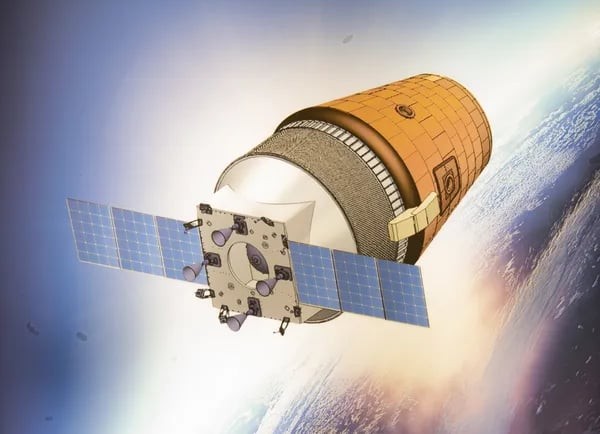Gaganyaan: India’s Leap into Human Spaceflight
India’s foray into space exploration has seen remarkable achievements, from launching the Chandrayaan and Mangalyaan missions to establishing a reputation for cost-effective satellite deployment.
TECHNOLOGY
Thinkbrief
7/13/20253 min read


India’s foray into space exploration has seen remarkable achievements, from launching the Chandrayaan and Mangalyaan missions to establishing a reputation for cost-effective satellite deployment. Yet, among all milestones, the Gaganyaan mission stands as a defining chapter in India’s space history. Spearheaded by the Indian Space Research Organisation (ISRO), Gaganyaan is India’s ambitious human spaceflight program that seeks to send Indian astronauts into low Earth orbit (LEO) and bring them back safely. If successful, India will become the fourth country in the world—after the United States, Russia, and China—to demonstrate independent human spaceflight capability.
Vision and Objectives
Announced by Prime Minister Narendra Modi on 15th August 2018, the Gaganyaan mission is more than just a technological endeavor; it is a symbol of national pride and scientific excellence. The mission aims to place a crew of three astronauts in a 300 to 400 km low Earth orbit for a duration of up to seven days. The primary goals include testing ISRO’s capabilities in human-rated launch vehicles, life support systems, crew safety, and safe re-entry and recovery operations.
Additionally, the mission seeks to boost India’s space infrastructure, encourage indigenous technological development, and pave the way for more advanced missions in the future—such as space stations and interplanetary human expeditions.
Key Components of the Mission
The Gaganyaan mission involves a complex interplay of advanced technology and precision engineering. The launch vehicle chosen for this mission is the Human-Rated LVM3 (HLVM3), an upgraded version of the GSLV Mk III, modified to ensure crew safety with redundancies in critical systems and an abort mechanism for emergencies.
The crew module, where the astronauts will be housed, is designed to provide an Earth-like environment with life support, thermal regulation, and communications systems. It is attached to a service module, which supplies propulsion and power while in orbit. The module is also equipped with thermal shielding and parachutes to ensure safe re-entry and splashdown in the Indian Ocean.
An essential part of the mission is the Crew Escape System (CES), designed to jettison the crew module away from the launch vehicle in case of a failure. This system has already been tested in prior abort missions and will be further validated through uncrewed test flights.
Human Element: Training and Astronaut Selection
ISRO has selected four Indian Air Force pilots for astronaut training, conducted in collaboration with Russia’s Gagarin Cosmonaut Training Centre. These astronauts, also known as Vyomanauts, have undergone rigorous physical, psychological, and technical training. They are currently undergoing mission-specific instruction at ISRO’s Human Space Flight Centre (HSFC) in Bengaluru, including simulations, isolation studies, and space medicine.
To ensure the systems work before sending humans, ISRO plans to launch uncrewed missions carrying a humanoid robot named Vyommitra. This female robot will simulate human physiology, perform basic onboard functions, and relay data to ground control.
Timeline and Mission Profile
Originally targeted for 2022 to commemorate 75 years of Indian independence, the mission was delayed due to the COVID-19 pandemic and logistical challenges. As of 2025, ISRO has scheduled a series of test flights. The first uncrewed mission is expected soon, followed by another uncrewed test flight and then the crewed mission in late 2025 or early 2026.
The mission will launch from Satish Dhawan Space Centre, Sriharikota, placing the crew module in low Earth orbit. After completing its orbital duration, the module will re-enter Earth’s atmosphere and land in the Indian Ocean, where the Indian Navy will recover the astronauts.
National and Global Significance
The Gaganyaan mission represents a strategic leap in India’s space capabilities. Not only will it boost indigenous technological development in aerospace, robotics, AI, and materials science, but it will also inspire millions of young Indians to pursue careers in science and innovation.
On the global stage, Gaganyaan enhances India’s profile in space diplomacy, enabling future collaborations for international space stations, lunar bases, or Mars missions. It also strengthens India’s credentials in defense space technology, dual-use research, and commercial space launch markets.
Conclusion
Gaganyaan is not just about sending humans into space; it is about demonstrating that India has the vision, capability, and determination to be among the world’s elite in space exploration. It symbolizes the convergence of scientific prowess, national aspiration, and global ambition. As ISRO prepares to script this historic chapter, the mission inspires a billion dreams, affirming that India’s space journey is only just beginning.